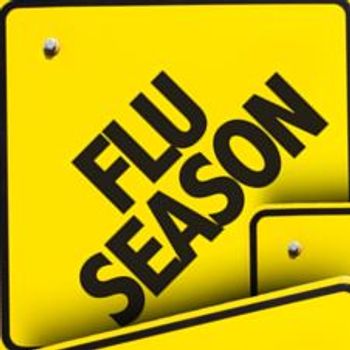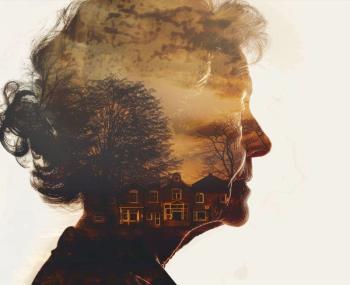
Posttraumatic Stress Doesn't Shadow Trauma in Childhood
DURHAM, N.C. -- Children often get past traumatic events without subsequently encountering posttraumatic stress disorder, researchers here reported.
DURHAM, N.C., May 8 -- Children often get past traumatic events without subsequently encountering posttraumatic stress disorder, researchers here found.
More than two-thirds of the children studied reported one or more traumatic events by age 16, William E. Copeland, Ph.D., of Duke reported in the May issue of the Archives of General Psychiatry.
After a first childhood trauma, the prognosis is generally favorable, said Dr. Copeland and colleagues. However, they added, this is not true for children experiencing multiple traumatic events or for those with a history of anxiety.
The children in western North Carolina came from the Great Smoky Mountain Study, a longitudinal study of psychopathology and use of medical services in childhood.
From 1993 to 2000, a representative sample of one parent and 1,420 children, ages nine, 11, and 13 at the start, were followed up annually through age 16.
Of the children 790 were boys and 639 were girls. When weighted to population probability, 89.5% were white, 6.9 % were African American, and 3.6% % were American Indian.
Traumatic events were grouped into broad categories, including: violence (violent death of a loved one, war, terrorism, victim of physical violence, physical abuse by a relative, captivity); sexual trauma (rape, sexual abuse, coercion); other injury or trauma (diagnosis of physical illness, serious accident, natural disaster, fire); witness to trauma, and learning about trauma (so called "vicarious" events).
Violence and sexual trauma were associated with the highest rates of symptoms, the researchers reported.
Of the children, 68.2% reported at least one traumatic event by age 16, with 13.4% of those children developing some posttraumatic stress (PTS) symptoms.
However, full-blown post-traumatic stress disorder (PTSD) was rare in middle childhood and adolescence. Less than 0.5% of the children met the criteria for PTSD, the researchers reported.
Higher levels of trauma exposure were related to higher levels of most types of psychopathology, particularly anxiety and depressive disorders, as well as other impairments, the researchers said.
Adolescence was a strong predictor of both painful recall and subclinical PTSD, after controlling for other variables, the researchers said. Painful recall in these teenagers was linked to exposure to an earlier trauma, being previously diagnosed as having an anxiety disorder, and coming from a difficult family environment.
Risk factors significantly predicting a first traumatic exposure were previous environmental adversity, previous parenting problems, and a history of a depressive disorder.
In response to a first trauma experience, overall, 8.2% of the individuals studied reported painful recall of events and 1.4% reported subclinical PTSD.
Children exposed to trauma had almost twice the rate of psychiatric disorders compared with those not exposed, the researchers said.
For example, in a comparison of individuals reporting posttraumatic stress symptoms after a first trauma and those with no symptoms immediately after trauma, rates of psychiatric disorders were higher in the painful-recall group than among those without painful recall (31.1% versus 14.5%). However, a year after the traumatic event, psychopathology rates in the two groups were the same.
The rate of PTSD after exposure to a traumatic event was lower than that reported in studies of adults, the researchers wrote. At the same time, the results of this study suggest that these children experienced posttraumatic stress symptoms, higher rates of psychopathology, and additional impairments.
One explanation for this finding has to do with the DSM-IV criteria for PTSD, which were developed from the adult literature and may not fully reflect response to trauma in children, the researchers said. The results of the current study suggest that either the current criteria for PTSD when applied to children may not be developmentally sensitive, or that childhood PTSD is rare.
Among potential sources of bias in the study, the researchers wrote, is that estimates of traumatic events may have been inflated, and this would likely be reflected in similarly elevated psychopathology rates. However, psychiatric prevalence rates were consistent with those obtained in other studies, the researchers said.
Also, they wrote, there was no independent verification of the traumatic event reported, although it is probably unavoidable in a community-based study of an event that does not follow a specific event, such as a hurricane or flood.
Severe events, such as sexual abuse, may have been under-reported, they said. It is not uncommon for an event reported at one time to be followed by a false-negative report. However, in their study, the researchers said, severe events were assessed at multiple time points to attempt to offset this limitation.
Studies of childhood trauma that use convenience samples of children exposed to specific events and undergo assessments for PTS symptoms provide only incomplete answers to how common trauma is in childhood and how children typically respond to these events, Dr. Copeland said.
This study suggests that the effects of trauma are not symptom-specific. Few children exposed to trauma develop PTSD, and the few who display lesser PTS symptoms can be identified through information about their age, trauma history, anxiety history, other impairments, and family environment, Dr. Copeland concluded.
Newsletter
Enhance your clinical practice with the Patient Care newsletter, offering the latest evidence-based guidelines, diagnostic insights, and treatment strategies for primary care physicians.



























































































































































































































































































